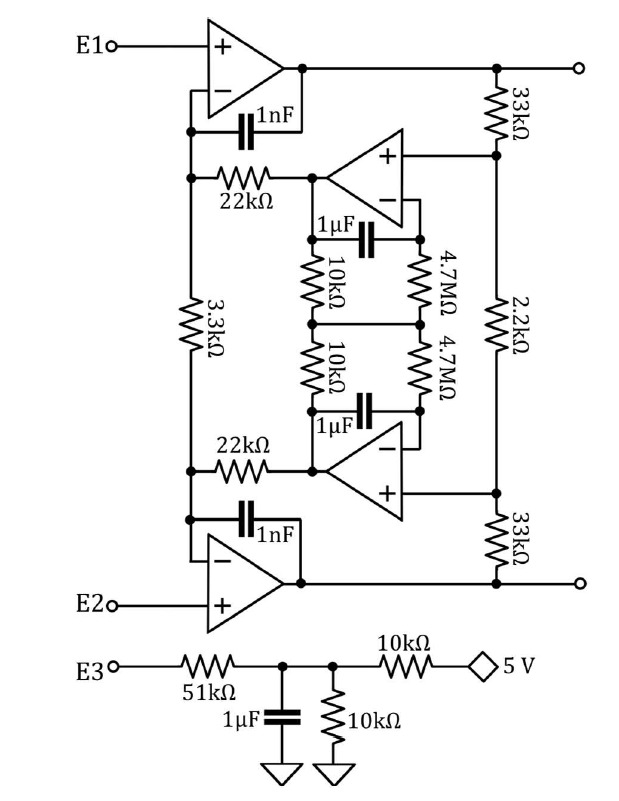Nuevo artículo publicado: A fully-differential biopotential amplifier with a reduced number of parts
A fully-differential biopotential amplifier with a reduced number of parts

Publisher: IEEE
Enrique M. Spinelli; Federico N. Guerrero; Pablo A. García; Valentín A. Catacora; Marcelo A. Haberman
Abstract:
Objective: Fully differential topologies are well-suited for biopotential amplifiers, mainly for single-supply battery-powered circuits such as portable wearable devices where a reduced number of parts is desired. A novel fully differential biopotential amplifier is proposed with the goal of providing electrode offset rejection, bandwidth limitation, and a temporal response compliant with biomedical standards with only a single commercial quad operational amplifier (OA) integrated circuit. Methods: A novel compensation strategy was used to provide a transfer function with only one zero at the origin, which makes it easy to comply with the transient response imposed by biomedical standards. A topology with no grounded components was leveraged to obtain a common-mode rejection ratio (CMRR) ideally infinite and independent of components mismatches. Results: Design equations are presented and, as an example, an electrocardiogram (ECG) amplifier was built and tested. It features a CMRR of 102 dB at 50 Hz, 53 dB gain that supports DC input voltages up to ±300 mV when powered from a 0 V to 5 V single-supply voltage, and a cutoff frequency of less than 0.05 Hz with a first order response. Conclusion: A fully-differential biopotential front-end was designed and validated through experimental tests, demonstrating proper operation with only 4 OAs. Significance: The amplifier is intended for board-level design solutions, it can be built with off-the-shelf components that can be selected according to specific needs, such as reduced power consumption, low noise, or proper operation from a low-voltage power source.
Published in: IEEE Transactions on Instrumentation and Measurement ( Early Access )
Date of Publication: 07 November 2022
Publisher: IEEE
